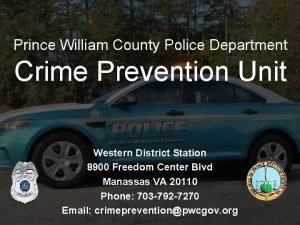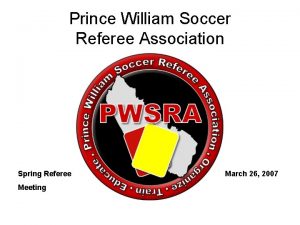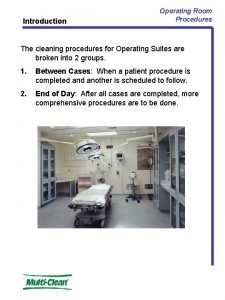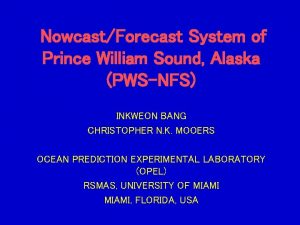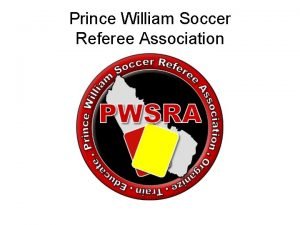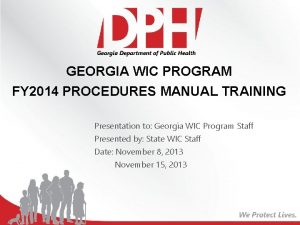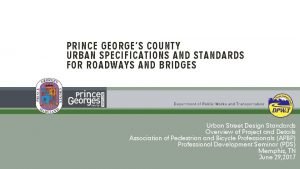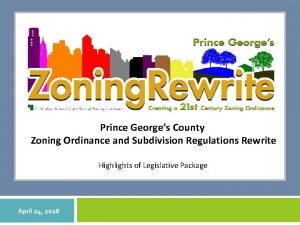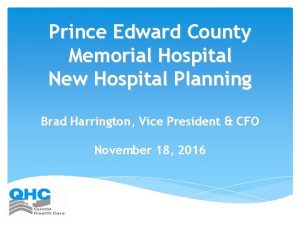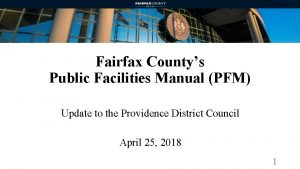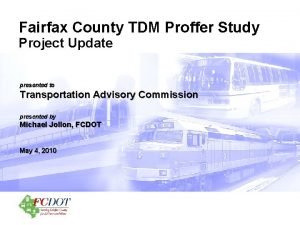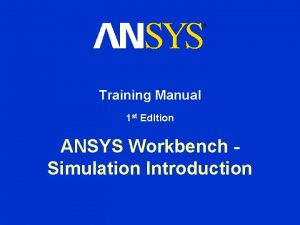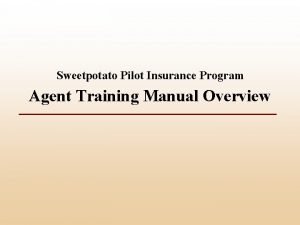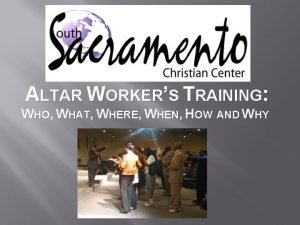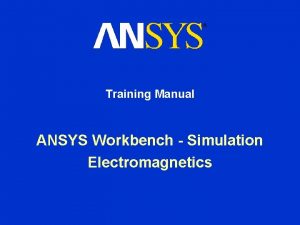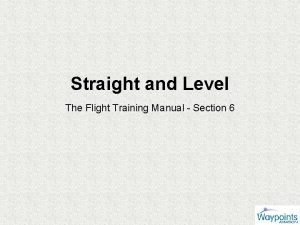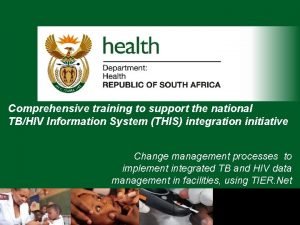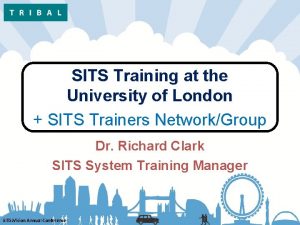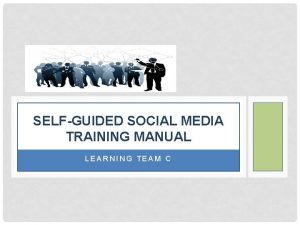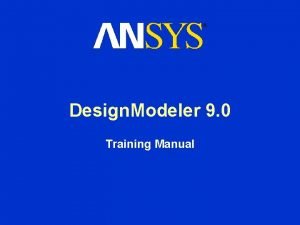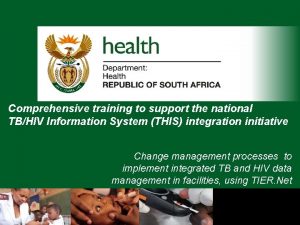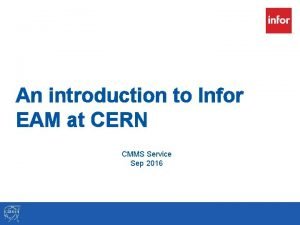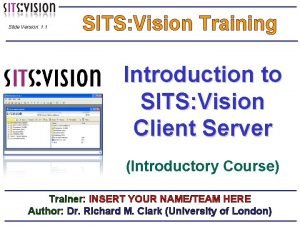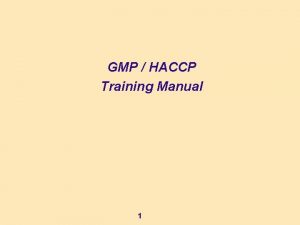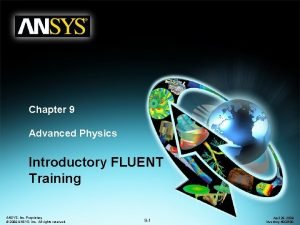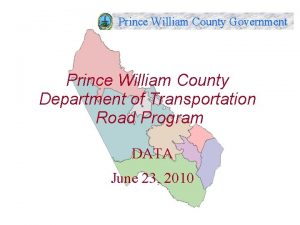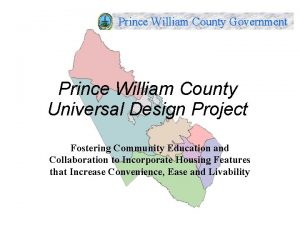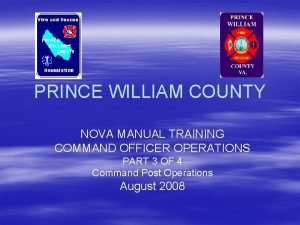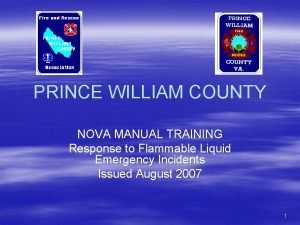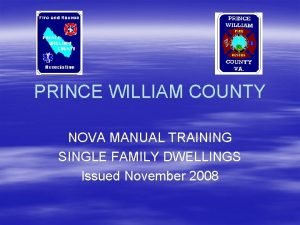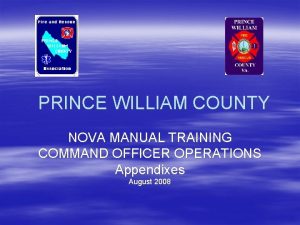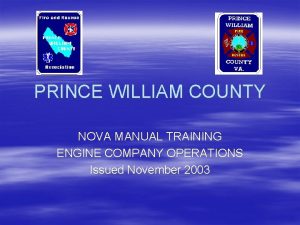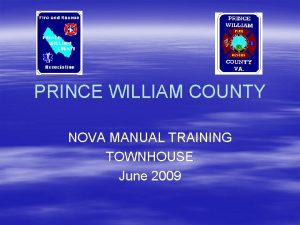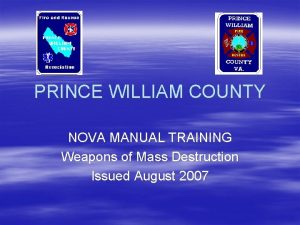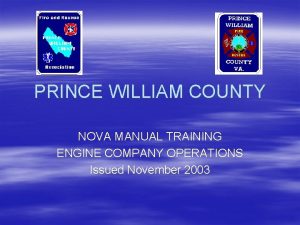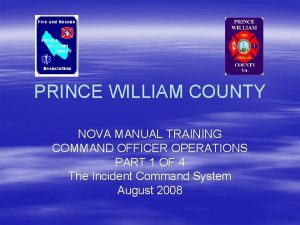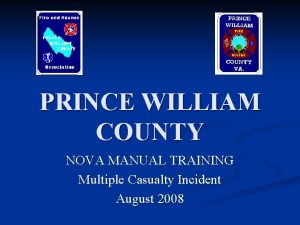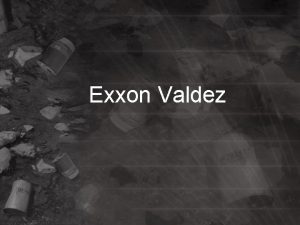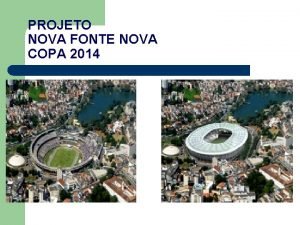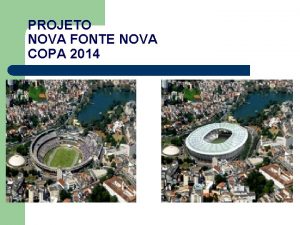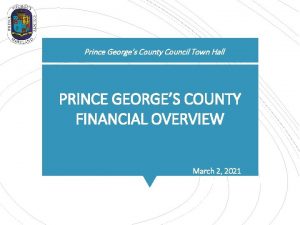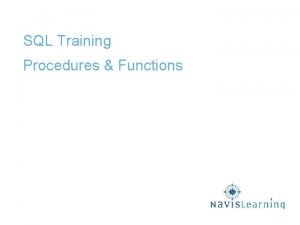PRINCE WILLIAM COUNTY NOVA MANUAL TRAINING Operating Procedures


































- Slides: 34

PRINCE WILLIAM COUNTY NOVA MANUAL TRAINING Operating Procedures for Highway Incidents Issued August 2007

Purpose of this manual is… § To provide the incident officer and members with a uniform guide for safe operations at incidents occurring on the highway system. § To serve as a guideline for decision making and can be modified by the incident officer as necessary to address existing incident conditions.

Each year many significant incidents occur on roadways within the Washington-Metropolitan area. Whether it is on the interstate highway or on secondary road, the potential for injury or death to members is overwhelming.

Managing a highway incident is a team effort “It is not a matter of “who is in charge” , but “who is in charge of what”

Priority Concerns § § § Care of the injured Protection of the public Safety of the emergency responders Protection of the environment Clearance of traffic lanes – Activities blocking lanes should be concluded as quickly as possible and normal flow resumed

Overview § Water supply officer should be established early – Foam units, tankers and units with LDH are likely to be needed § Water sources vary greatly – Hydrants on or near highway – Static sources quite remote § Preplanning is essential

Primary Objectives § Establish safe operating area to prevent injuries emergency workers § Provide emergency care and transportation of the injured § Establish a water supply § Protect the environment § Restore normal traffic flow § Keep as many traffic lanes open as possible § Preserve evidence for investigators § Utilize the ICS/Unified Command System to manage resources

Response § Emergency response on limited access highways should include at least one unit traveling in each direction on the highway. § As soon as a unit arrives on the scene, the officer shall advise the communications center of the proper location and make a determination on the need of the other units responding.

Response § When responding together in the same direction, units should remain in single file.

Response § When using the shoulder for response, use caution and be aware of: – – Road signs Debris Guard rails Oversized & stopped vehicles – Standing water

“Authorized Vehicles Only” § Designated median strip crossovers marked “Authorized Vehicles Only” shall only be used when apparatus can complete the turn without obstructing the flow of traffic in either direction, or all traffic movement has stopped.

“One Way” § Response to access or egress ramps should be in the normal direction of travel unless the officer can confirm the oncoming traffic has been stopped and no civilian vehicles will be encountered on the ramp.

“U-Turns” in the Jersey Barrier § Utilization of U-turn access points in “Jersey” barriers is extremely hazardous and should be utilized only when the situation is necessary for immediate lifesaving measures.

Response § Unless a roadway is completely shut down, fire and EMS crews should avoid crossing over lanes of traffic on foot, especially lanes with traffic moving in the opposite direction from where their apparatus is parked. § Any action that allows members to operate in a non-shielded environment shall be avoided whenever possible.

Safety Considerations Management of incidents on the interstate system and local roadways requires the expertise and resources of the local Fire and Rescue Departments, local Police Departments, Virginia State Police, and the Virginia Department of Transportation, working in concert.

Apparatus Positioning § The proper spotting and placement of apparatus is the joint responsibility of the driver and officer

Apparatus Positioning § Provide a barrier of at least one lane wider than the width of the incident

Apparatus Positioning § First engine should position prior to incident scene – Close enough for hoselines, far enough for other apparatus to be in front § Engine placed at an angle to protect pump operator, front tires rotated away from incident § Work zone may require more than one engine for adequate protection

Apparatus Positioning § The rescue shall position in front of the first arriving engine in the most tactical position for extrication functions. It is important that the rescue company position within the area shielded by the first engine company.

Apparatus Positioning § EMS units shall position past the incident in a manner that allows for rescue functions, patient loading and rapid egress from the scene. It is important that the EMS units position within the area shielded by the first engine company.

Apparatus Positioning § Command staff shall position past the incident scene in a manner that facilitates command functions, rescue operations, and patient loading. These vehicles should position within the area shielded by the first engine.

Positioning § Units arriving prior to the first engine should position to best shield the scene for members initially operating § First arriving engine shall take the primary shielding position when they arrive

Positioning on EMS Incidents § EMS unit has priority position in front of address with access to driveway

Positioning on EMS Incidents § EMS unit without a suppression unit shall either: – Position off roadway in the driveway – Place cones to facilitate the flow of traffic

Positioning on EMS Incidents § Suppression units shall position to provide a shield for the back of the EMS unit – Stop short of address – Pull past if traveling from opposite direction § Suppression unit should stay until transport is made

Work Zone Safety § Prior to exiting apparatus: – Check to ensure traffic has stopped to avoid the possibility of being struck by a passing vehicle. – Communicate with all members that traffic has come to a stop and is safe to exit. – Look down to ensure that debris on the roadway will not become an obstacle, resulting in personal injury.

Work Zone Safety § All members should be in full protective clothing or traffic vests, as the situation dictates

Work Zone Safety § As soon as possible, the engine operator should place flares or traffic cones as appropriate.

Work Zone Safety § Account for person placing cones if not directly observed § Directional arrows mounted on apparatus should be used whenever feasible § If hills and curves are involved, first cone or flare should be place prior to the hill or curve

Visibility at Night § As the human eye becomes adapted to the dark, the first color to leave the spectrum is red.

Visibility at Night § Glare vision and recovery is the amount of time required to recover from the effects of glare once a light sources passes through the eye. – From light to dark at least six seconds – From dark to light at least three seconds § At 50 mph the distance traveled during a second is approximately 75 feet.

Visibility at Night § The best combination of lights to provide maximum visibility is as follows: – Red warning lights: – Headlights: – Fog lights: – Pump panel lights: – Spot lights on rear and front: – Traffic directional arrow: ON OFF ON ON ON

Clearing Traffic Lanes § A unit shall remain on scene to block traffic for EMS units, unless the EMS unit can be moved to a safe area out of traffic. § When practical, EMS units should move from the roadway as soon as practical. § It is critical when operational phases are completed, that apparatus be repositioned to allow traffic to flow on as many lanes as possible.

Major Highway Incidents § Officers should consider the magnitude of highway incidents. § The IC should consider declaring a “Major Highway Incident” in those cases where the operation will seriously impact the traffic movement in the area of the incident.
 Signet school program
Signet school program Prince william county police report online
Prince william county police report online Prince william soccer tournament
Prince william soccer tournament Operating room cleaning procedures
Operating room cleaning procedures Ndbc prince william sound
Ndbc prince william sound Prince william soccer club
Prince william soccer club William arthur philip louis
William arthur philip louis Georgia wic procedures manual
Georgia wic procedures manual Prince george's county standard details
Prince george's county standard details Prince george's county new zoning ordinance
Prince george's county new zoning ordinance Pefht
Pefht Fairfax county pfm
Fairfax county pfm Hennepin county infectious disease manual
Hennepin county infectious disease manual Fairfax county public facilities manual
Fairfax county public facilities manual Ansys workbench manual
Ansys workbench manual Elijah's challenge
Elijah's challenge Insurance agent training manual
Insurance agent training manual Altar worker training
Altar worker training Ansys training manual
Ansys training manual Bartender training manual doc
Bartender training manual doc How to maintain straight and level flight
How to maintain straight and level flight Kde munis guides
Kde munis guides Tier.net training manual
Tier.net training manual Pepperball hotshot
Pepperball hotshot Sits training
Sits training Social media training manual
Social media training manual Prison ministry training manual download
Prison ministry training manual download Training manual design
Training manual design Tier.net training manual
Tier.net training manual Eam light
Eam light Agresso instructions
Agresso instructions Sits:vision training manual
Sits:vision training manual Examples of critical control points
Examples of critical control points Financial coaching training manual
Financial coaching training manual Ansys training manual
Ansys training manual

